Building a Geodesic Dome Greenhouse for Under $200
http://homefixated.com/geodesic-dome-greenhouse/
6 Commentsby RICH on OCTOBER 2, 2014
in ARCHITECTURE, GARDENING, HOW TO

WARNING: Building domes can be very addictive…Building a dome may be one of humankind’s earliest D.I.Y. projects. Dome shelters, framed with the curved tusks of mastodon are among the oldest structures unearthed by archaeologists. Wigwams and yurts provided strong, lightweight and mobile shelter for nomadic people. In modern times, architects and designers like R. Buckminster Fuller have used the dome to erect huge enclosed spaces like stadiums and observatories with a minimum of materials.

A slightly fancier version of the geodesic dome – but for radar, not gardens
I have always been intrigued with domes and I decided to take a swing at building some of my own. Unfortunately, mastodon tusks are in short supply these days, so I set about looking for alternative materials. I started with some scale models and smaller domes made from wood, but then set upon the perfect material- scrap electrical conduit. I was working on the renovation of a large commercial building one summer and being a habitual dumpster-diver, I discovered that the electricians were chucking a fair amount of old conduit. I started asking around to other electrical contractors I knew, and they all had dumpsters full of conduit scraps.

Building a dome is easy! Even MY friends can do it!
I discovered online that there are a lot of people out there making these types of domes. Who knew? Apparently domes made of 3/4” conduit or pvc pipe are the shelters of choice at the annual Burning Man festival out in the Nevada desert. Domes that enclose a curved space using straight struts are called “Geodesic” domes. They are made up of triangles, and the more triangles you add, the smoother the curved shape becomes. In dome building, this is referred to as the “frequency” of the dome. The math of dome-building can get pretty cosmic, but you don’t need to be Neil DeGrasse Tyson to grasp the basics.
There are several websites and forums out there that document dome projects, but the one I like the best is desertdomes.com. It has a really handy dome calculator that you can use to figure out the lengths of your struts for domes of different frequencies. I started with a simple 2 frequency dome. Desert Domes is an older website, but the calculator and tips are still great. You can also find a really great 70’s hippy-era book on domes called (surprise!) Domebook by Lloyd Kahn out there as a free pdf, if you hunt around the dark corners of the web a bit.

Flatten the ends…

…and drill the bolt holes.
Anyway, the beauty of using conduit is that you can easily flatten the ends and drill them with hand tools to make bolt-together connections. Having a bench vice and a drill press make it super easy, but you can just as easily go caveman and hammer the ends flat and use a hand drill. Precision is not critical, but you need to get all of the center-to-center dimensions of the holes pretty close or bolting the dome together becomes a real wrestling match. Assembly is do-able for one person, but it will go together in a snap with an extra set of hands.
When it comes to covering the dome, you want to use the heaviest and clearest plastic you can afford. Greenhouse plastic is great, but frankly you can do pretty well with a roll of 6 mil construction plastic. It may not last as many years, but the price is right and it takes the abuse from winter winds really well. Since you are covering a spherical object with a flat sheet of plastic, you will have to form pleats or gussets to make it conform properly. It has been my goal for years to actually sew a soccer ball-like plastic cover, but I haven’t tackled that quite yet.

Ready to cover the dome.
The great thing about a dome as opposed to a hoop house is their strength and aerodynamic shape that resists very high winds, and it’s inherent air flow that makes it easy to heat and cool. On a sunny day in the depths of winter, it can hit 80º F in the dome, when it is 5º F outside. Conversely, you can roll up the sides on a hot summer day and it does not hold heat like a hoop house.
We typically use small inner hoop covers made of concrete reinforcing wire in the really cold parts of the winter and cover the raised beds at night with old blankets from Goodwill. With no extra heating we can easily grow spinach, kale and other leafy greens all the way through the coldest winters here in zone 5!

Inner hoop houses.

Greens all winter long!
Dome greenhouses may not be as easy to throw together as a hoophouse, but I guarantee, it is worth the effort. Our dome greenhouse has survived high winds that have ripped apart our neighbors high dollar hoophouse, and I built it for a tiny fraction of the price. A smaller backyard dome can be a great way to extend your growing season, as well as being a wonderful teaching tool for kids and a fun conversation piece.

The dome in February…
http://homefixated.com/geodesic-dome-greenhouse/
6 Commentsby RICH on OCTOBER 2, 2014
in ARCHITECTURE, GARDENING, HOW TO
WARNING: Building domes can be very addictive…Building a dome may be one of humankind’s earliest D.I.Y. projects. Dome shelters, framed with the curved tusks of mastodon are among the oldest structures unearthed by archaeologists. Wigwams and yurts provided strong, lightweight and mobile shelter for nomadic people. In modern times, architects and designers like R. Buckminster Fuller have used the dome to erect huge enclosed spaces like stadiums and observatories with a minimum of materials.
A slightly fancier version of the geodesic dome – but for radar, not gardens
I have always been intrigued with domes and I decided to take a swing at building some of my own. Unfortunately, mastodon tusks are in short supply these days, so I set about looking for alternative materials. I started with some scale models and smaller domes made from wood, but then set upon the perfect material- scrap electrical conduit. I was working on the renovation of a large commercial building one summer and being a habitual dumpster-diver, I discovered that the electricians were chucking a fair amount of old conduit. I started asking around to other electrical contractors I knew, and they all had dumpsters full of conduit scraps.
Building a dome is easy! Even MY friends can do it!
I discovered online that there are a lot of people out there making these types of domes. Who knew? Apparently domes made of 3/4” conduit or pvc pipe are the shelters of choice at the annual Burning Man festival out in the Nevada desert. Domes that enclose a curved space using straight struts are called “Geodesic” domes. They are made up of triangles, and the more triangles you add, the smoother the curved shape becomes. In dome building, this is referred to as the “frequency” of the dome. The math of dome-building can get pretty cosmic, but you don’t need to be Neil DeGrasse Tyson to grasp the basics.
There are several websites and forums out there that document dome projects, but the one I like the best is desertdomes.com. It has a really handy dome calculator that you can use to figure out the lengths of your struts for domes of different frequencies. I started with a simple 2 frequency dome. Desert Domes is an older website, but the calculator and tips are still great. You can also find a really great 70’s hippy-era book on domes called (surprise!) Domebook by Lloyd Kahn out there as a free pdf, if you hunt around the dark corners of the web a bit.
Flatten the ends…
…and drill the bolt holes.
Anyway, the beauty of using conduit is that you can easily flatten the ends and drill them with hand tools to make bolt-together connections. Having a bench vice and a drill press make it super easy, but you can just as easily go caveman and hammer the ends flat and use a hand drill. Precision is not critical, but you need to get all of the center-to-center dimensions of the holes pretty close or bolting the dome together becomes a real wrestling match. Assembly is do-able for one person, but it will go together in a snap with an extra set of hands.
When it comes to covering the dome, you want to use the heaviest and clearest plastic you can afford. Greenhouse plastic is great, but frankly you can do pretty well with a roll of 6 mil construction plastic. It may not last as many years, but the price is right and it takes the abuse from winter winds really well. Since you are covering a spherical object with a flat sheet of plastic, you will have to form pleats or gussets to make it conform properly. It has been my goal for years to actually sew a soccer ball-like plastic cover, but I haven’t tackled that quite yet.
Ready to cover the dome.
The great thing about a dome as opposed to a hoop house is their strength and aerodynamic shape that resists very high winds, and it’s inherent air flow that makes it easy to heat and cool. On a sunny day in the depths of winter, it can hit 80º F in the dome, when it is 5º F outside. Conversely, you can roll up the sides on a hot summer day and it does not hold heat like a hoop house.
We typically use small inner hoop covers made of concrete reinforcing wire in the really cold parts of the winter and cover the raised beds at night with old blankets from Goodwill. With no extra heating we can easily grow spinach, kale and other leafy greens all the way through the coldest winters here in zone 5!
Inner hoop houses.
Greens all winter long!
Dome greenhouses may not be as easy to throw together as a hoophouse, but I guarantee, it is worth the effort. Our dome greenhouse has survived high winds that have ripped apart our neighbors high dollar hoophouse, and I built it for a tiny fraction of the price. A smaller backyard dome can be a great way to extend your growing season, as well as being a wonderful teaching tool for kids and a fun conversation piece.
The dome in February…
Attachments
-
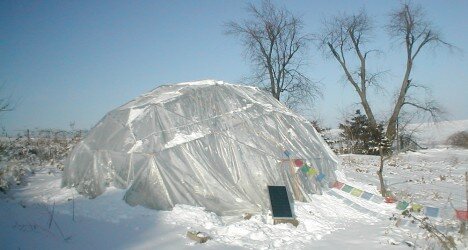 domepic6-468x250.jpg34.5 KB · Views: 392
domepic6-468x250.jpg34.5 KB · Views: 392 -
 radar-dome-67536_1280-460x297.jpg31.7 KB · Views: 397
radar-dome-67536_1280-460x297.jpg31.7 KB · Views: 397 -
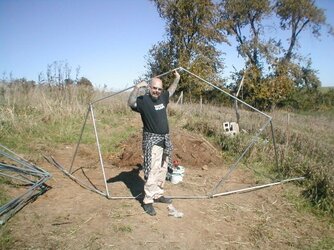 domepic1-460x345.jpg66.2 KB · Views: 411
domepic1-460x345.jpg66.2 KB · Views: 411 -
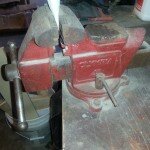 domea-150x150.jpg8.8 KB · Views: 371
domea-150x150.jpg8.8 KB · Views: 371 -
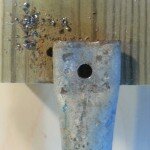 domeb-150x150.jpg7.1 KB · Views: 344
domeb-150x150.jpg7.1 KB · Views: 344 -
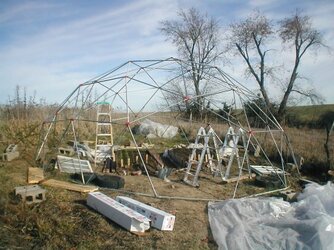 domepic2-460x345.jpg62.5 KB · Views: 385
domepic2-460x345.jpg62.5 KB · Views: 385 -
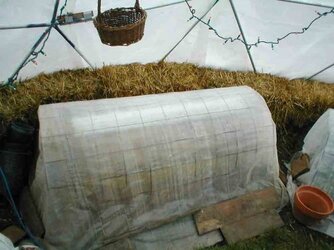 domepic7-460x345.jpg45.2 KB · Views: 337
domepic7-460x345.jpg45.2 KB · Views: 337 -
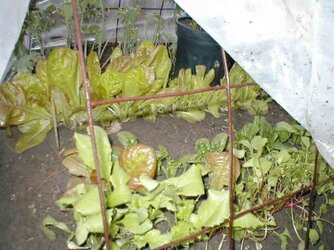 domepic8-460x345.jpg59.2 KB · Views: 374
domepic8-460x345.jpg59.2 KB · Views: 374 -
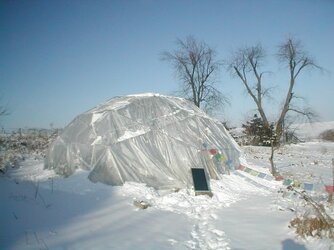 domepic6-460x345.jpg39.8 KB · Views: 369
domepic6-460x345.jpg39.8 KB · Views: 369



